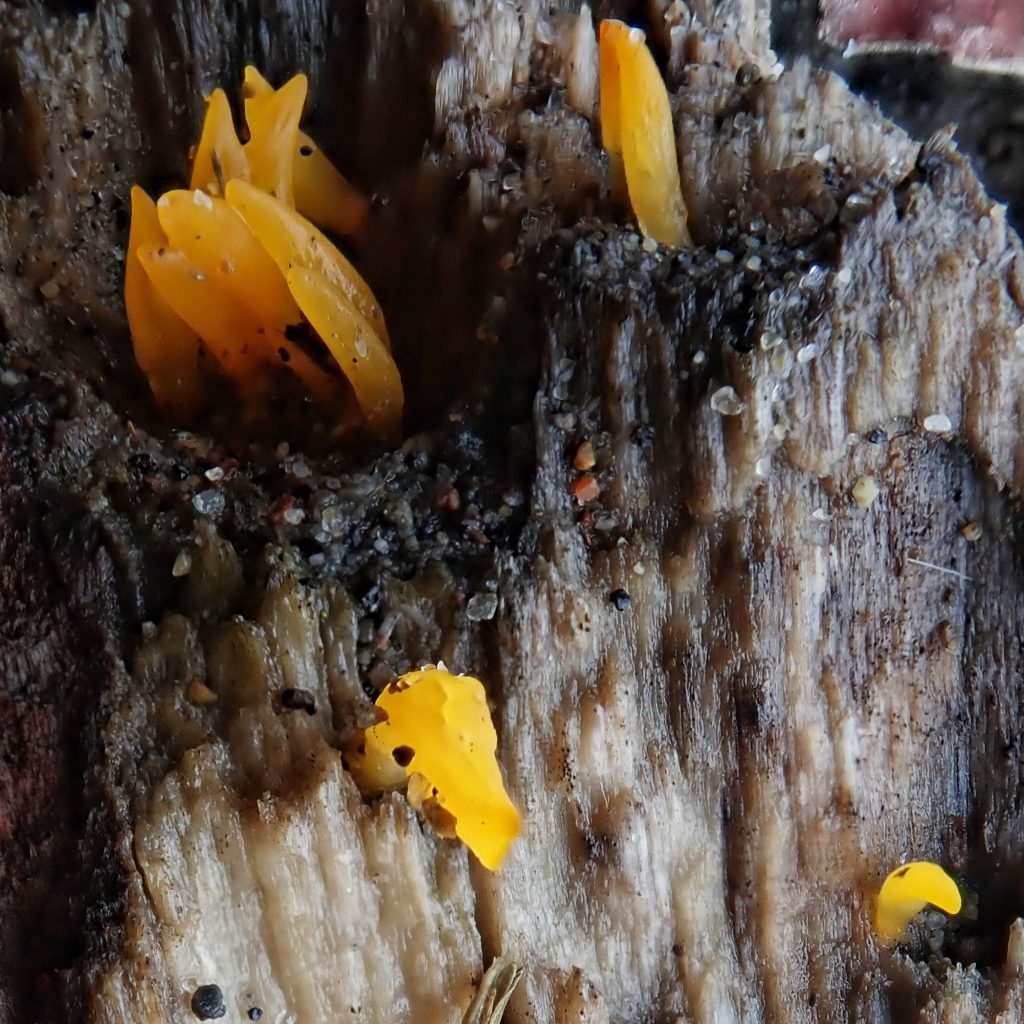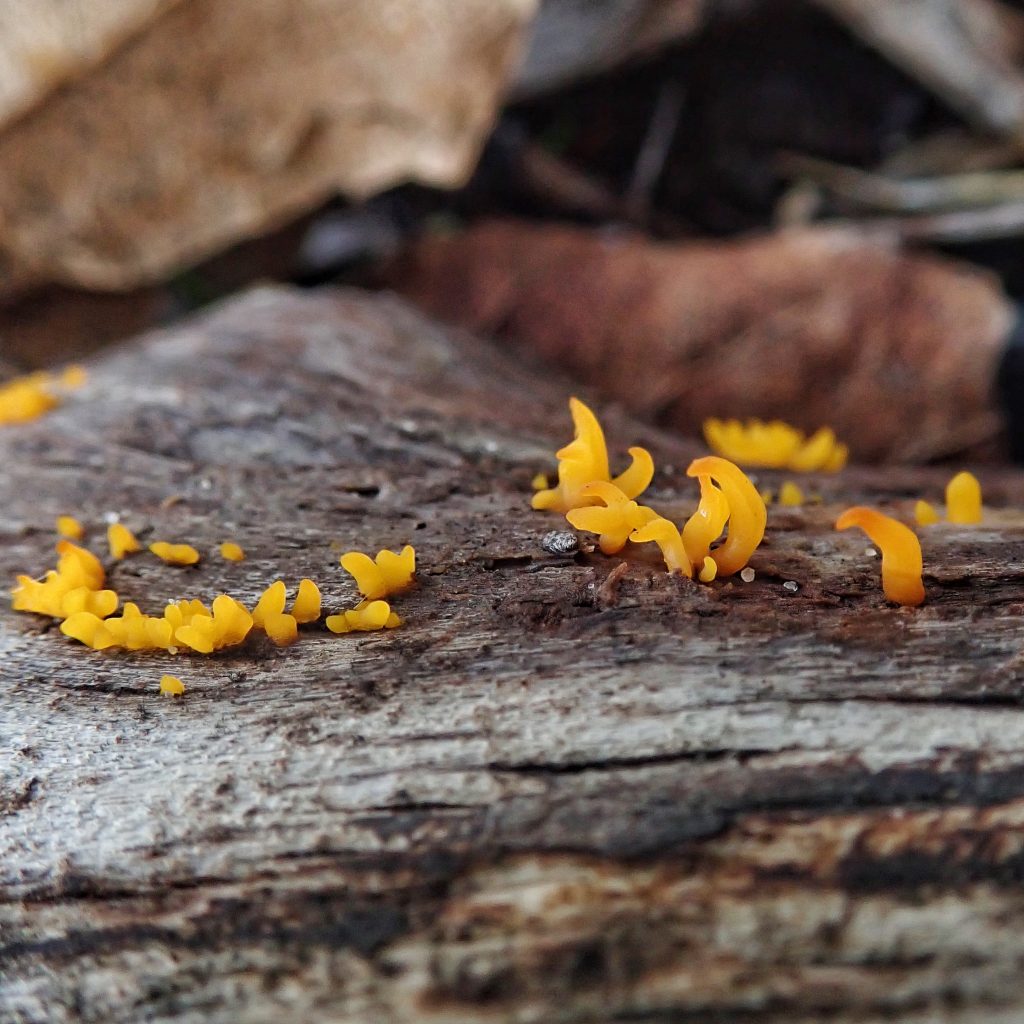
I have seen these little fungi in the family Dacrymycetaceae (jelly fungi) many times, but had always assumed they were an immature and probably unidentifiable form of a club, coral, or jelly fungus (like Dacromyces chrysospermus). But recently I ran into a photo of something identified as Calocera cornea, and wondered how they could state that with confidence. And it turns out that groups (often in a file) of tiny yellow orange clubs with little or no branching that are found on decaying hardwood logs almost have to be Calocera cornea.
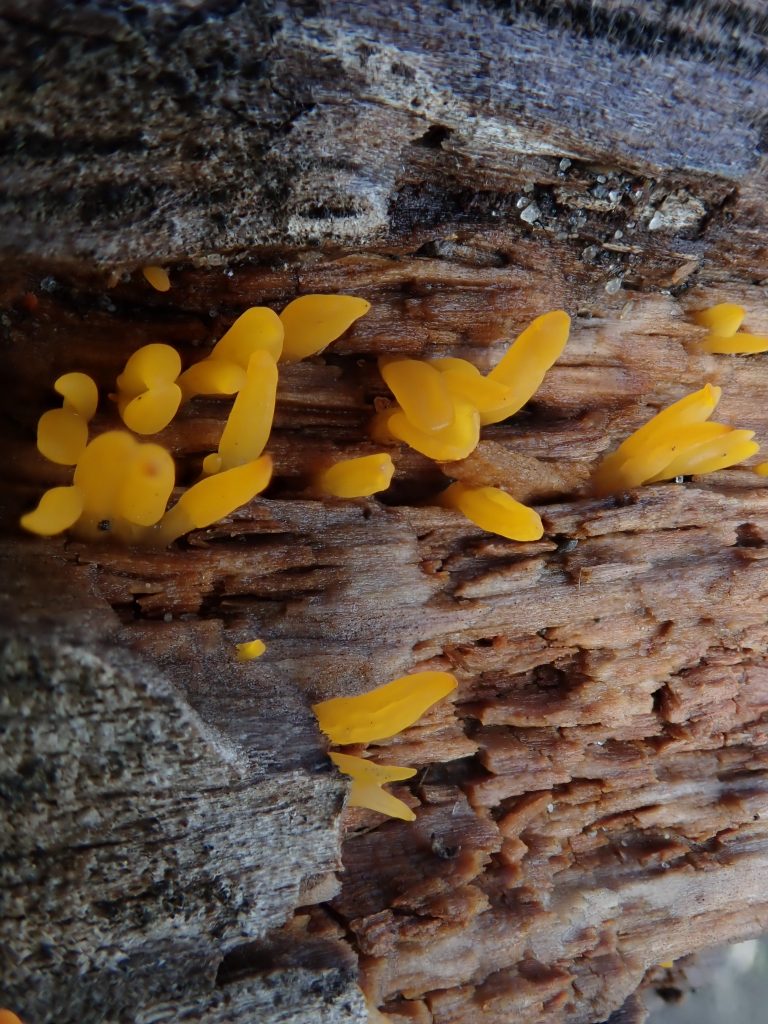
So, when I saw these fungi near the ends of a downed cottonwood at the Woodland bar whilst doing my weekly walk with my nbo Morgan and my granddog Jr, I snapped some photos and grabbed a specimen. Despite my near certainty as to its identification I still shaved some off onto a slide and slid it under the scope. Where I did find the tuning fork shaped basidia (basidia are the spore bearing structures of Basidiomycetes, which comprises most of what we think of as mushrooms, as well as a number of other fungi) that are diagnostic of Dacrymycetaceae, as well as the singly septate (partitioned by a septum) spores of Calocera cornea.
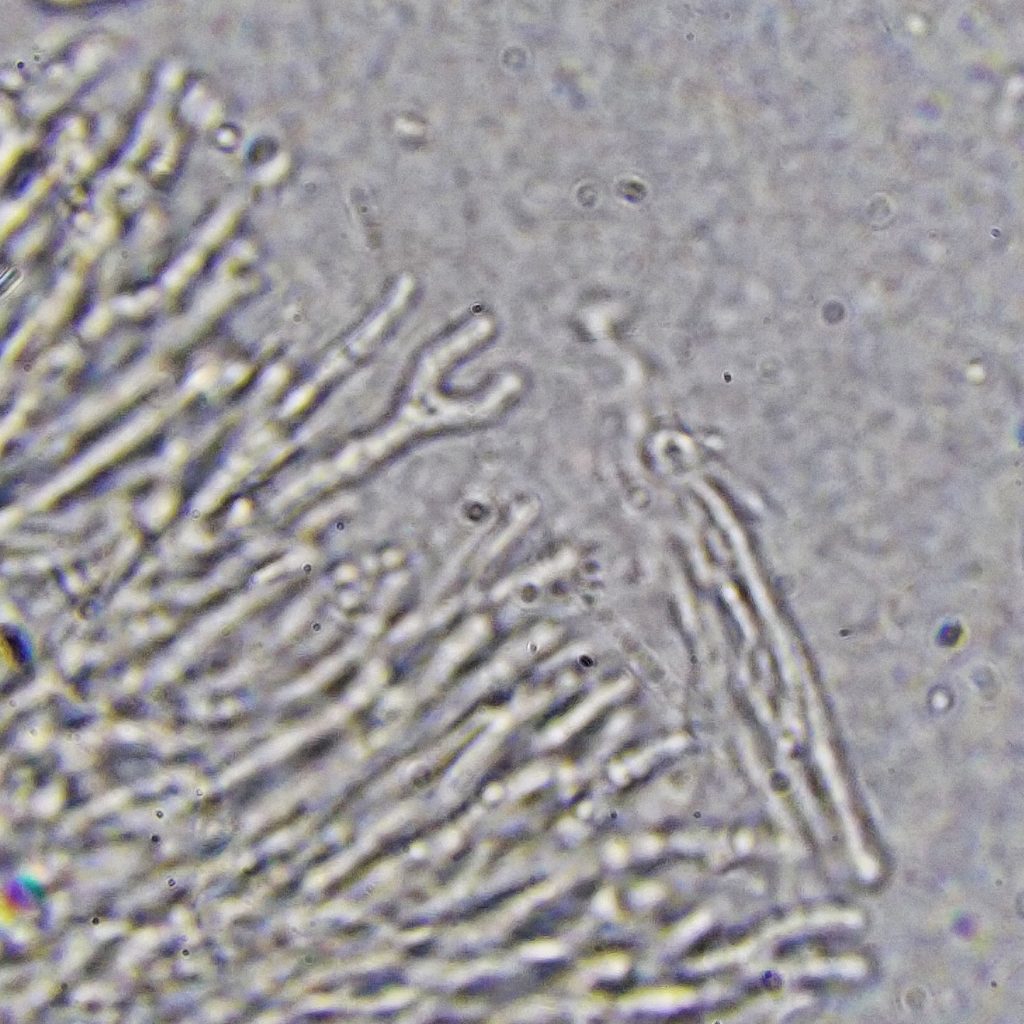
The only common name I see for this is small staghorn, but it doesn’t seem to be widely accepted. They are a white rot fungus, but since they are saprobes which only grow on dead or dying wood, they are useful decomposers, and are not considered to be destructive (unlike some Armillaria sp. which are a white rot taxa that do attack living trees and can be very destructive). Calocera cornea is not known to be toxic, but because of its small size and texture it is not used as a food source. Now that the rains are here for the year, keep your eyes open for sight of these cute little fungi.
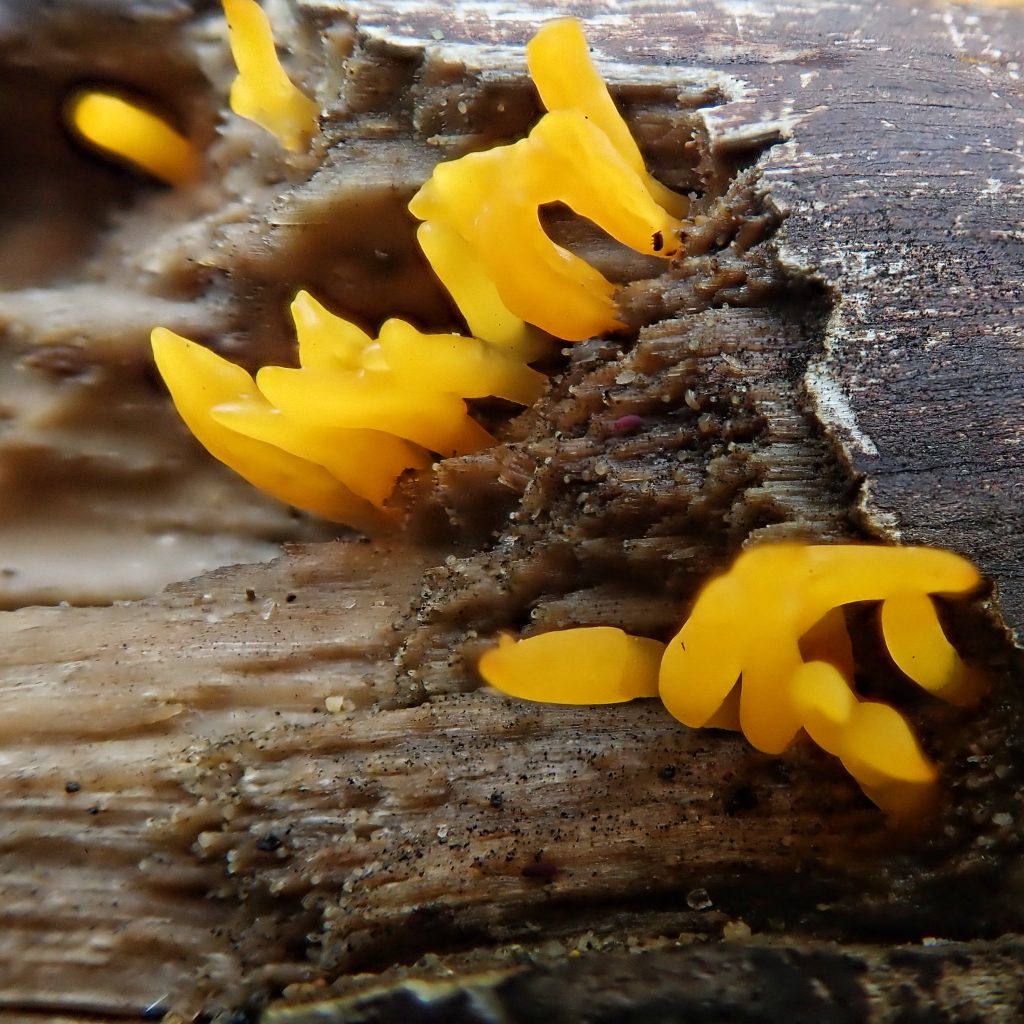
Description-Small (up to 18mm tall and 2mm thick), erect, yellow orange, mostly cylindrical fruiting bodies that are usually bluntly or sharply pointed but may have a shallow fork; gelatinous to the touch; occasionally scattered but usually in troops.
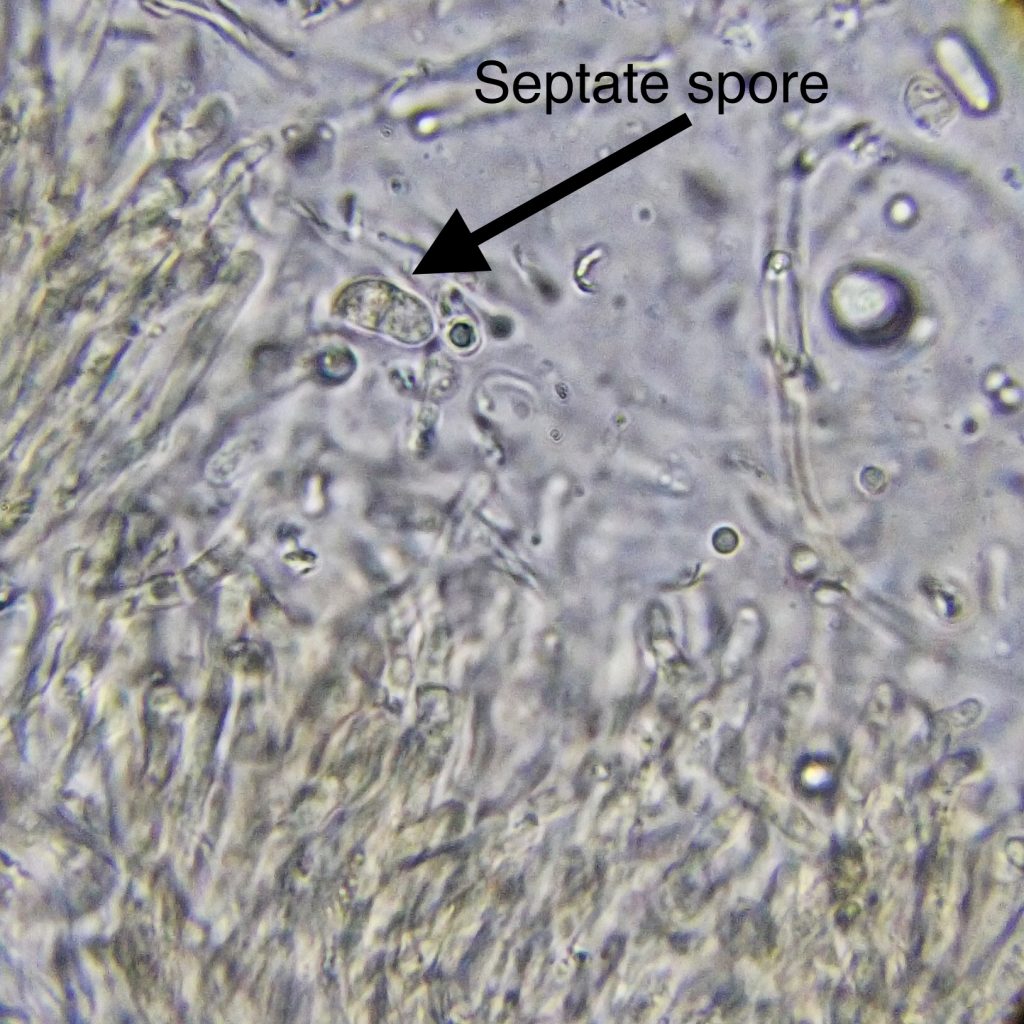
Similar species–Calocera furcata is found on conifer logs, tends to be forked at the tip, and has thrice septate spores; C. viscosa is larger, brighter yellow, usually multiply branched, and grows on conifers; other yellow orange Dacrymycetes are shaped differently; Mucronella sp. hang downward; coral and club fungi are firmer in texture, and not gelatinous or rubbery.
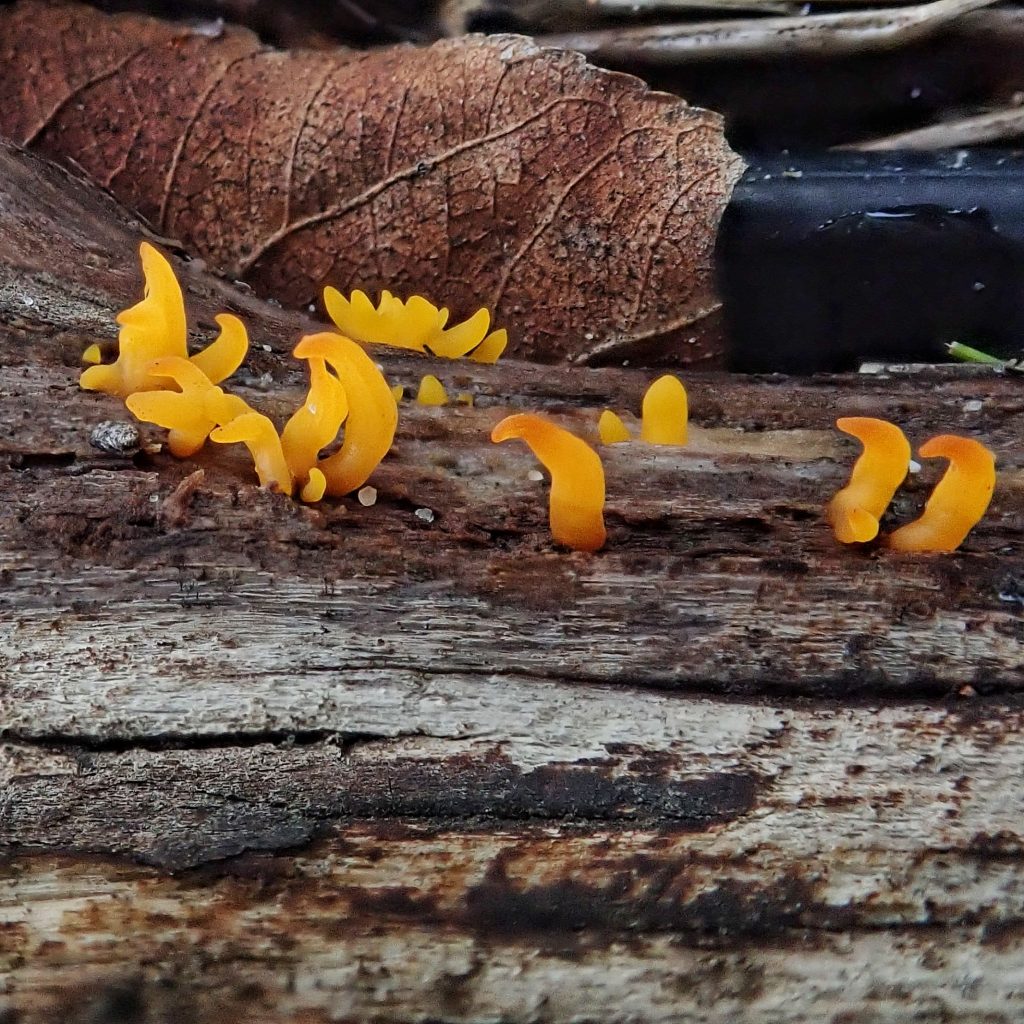
Habitat– Decaying hardwood logs, usually towards the ends.
Range-Worldwide; common region wide in appropriate habitat.
Reproductive timing-Mid fall to mid spring, depending on the beginning and end of the rainy season.
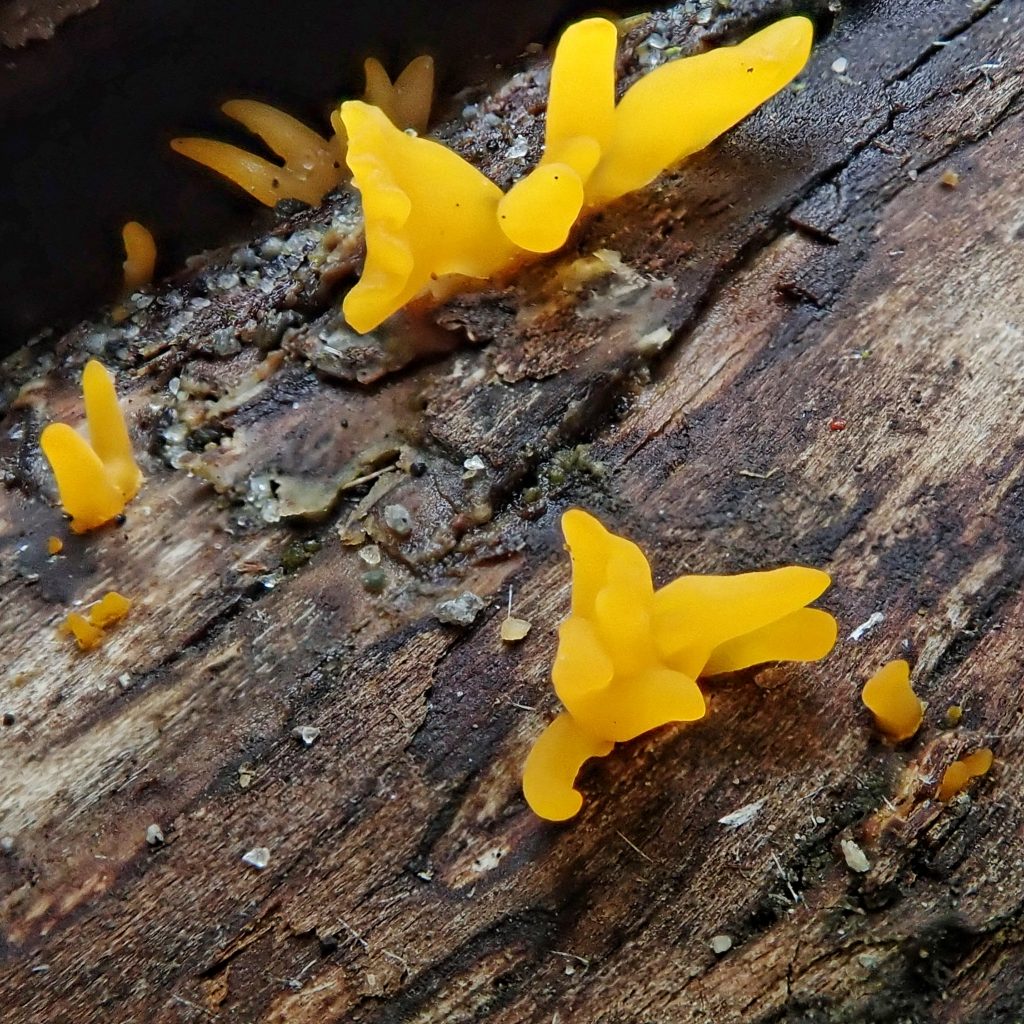
Eaten by– I can’t find anything species specific, but a good guess would include slugs, snails, and some beetles in the families Leiodidae, Staphylinidae, Endomychidae, Tenebrionidae, and Erotylidae amongst others; probably larvae of flies in Mycetophilidae and Phoridae; and small mammalian herbivores.
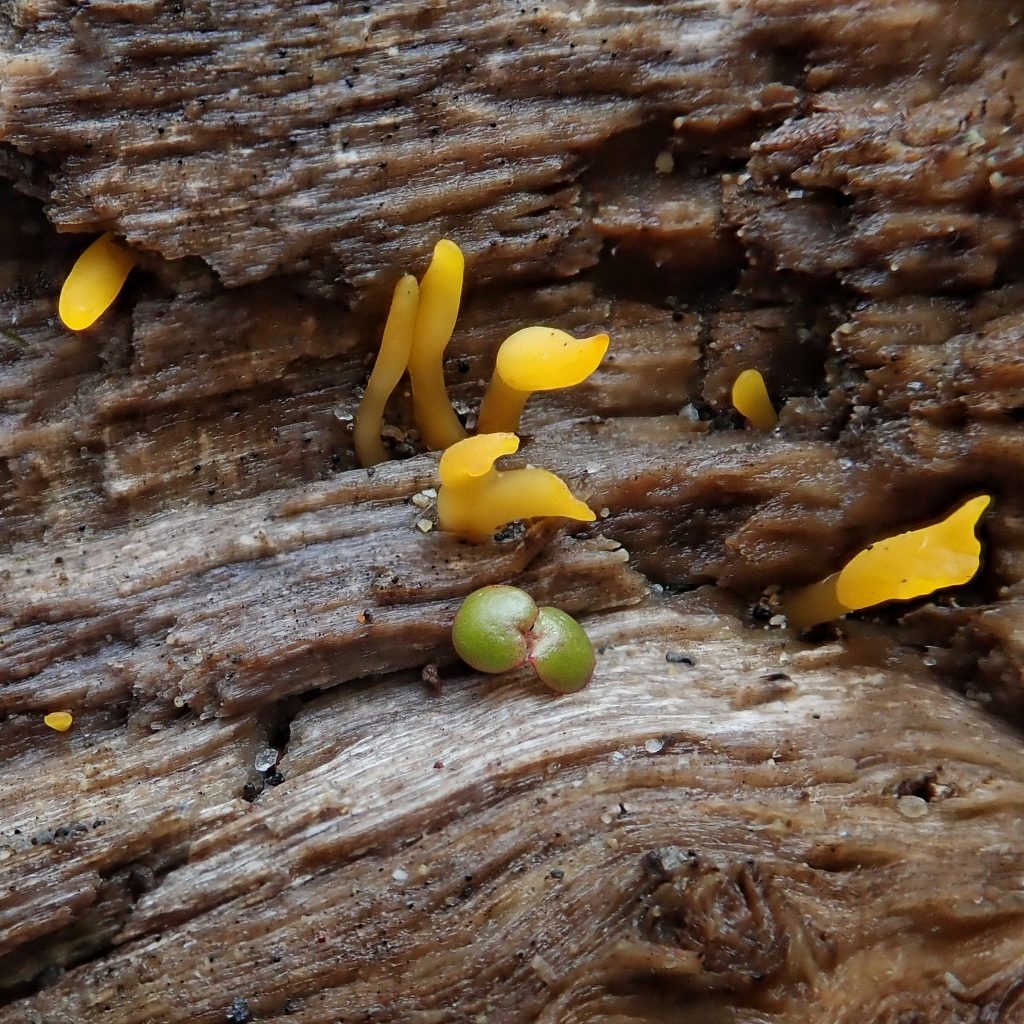
Etymology of names– Calocera is from the Greek words for ‘beautiful horn’, which refers to the tendency of this genera to form slender, branched fruiting bodies. The specific epithet cornea is from the Latin word for ‘horn’, and refers to the fact the fruiting bodies of this species tend to be unbranched, like true horns.
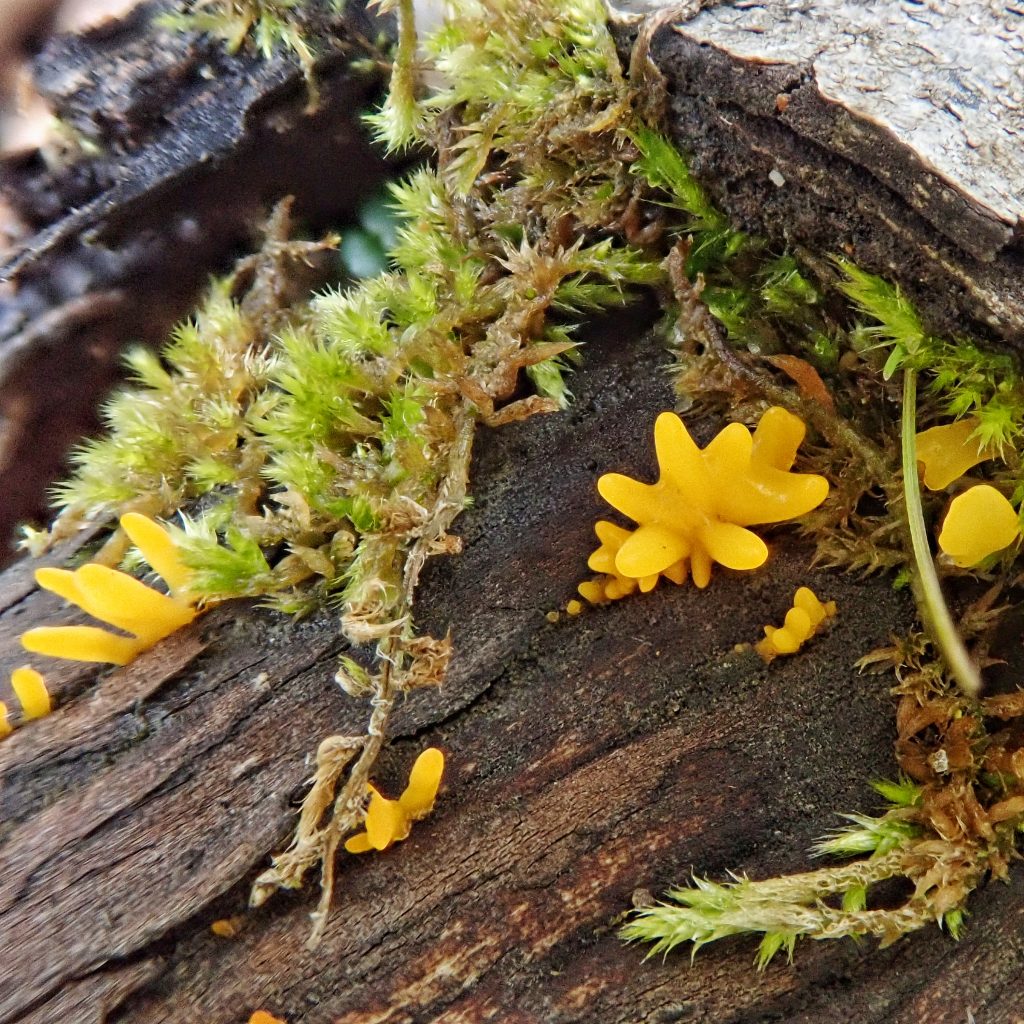
https://www.mushroomexpert.com/calocera_cornea.html
https://www.mykoweb.com/CAF/species/Calocera_carnea.html
https://mycocosm.jgi.doe.gov/Calco1/Calco1.home.html
https://www.first-nature.com/fungi/calocera-cornea.php
https://biology.burke.washington.edu/herbarium/imagecollection/taxon.php?Taxon=Calocera%20cornea
https://www.messiah.edu/Oakes/fungi_on_wood/club%20and%20coral/species%20pages/Calocera%20cornea.htm
